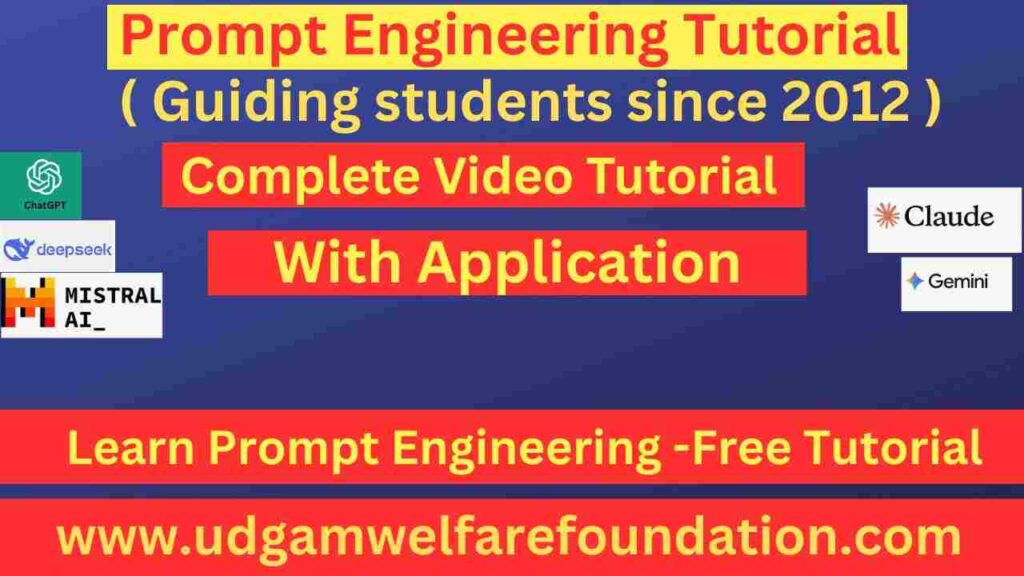Prompt Engineering Course Overview
Prompt engineering is the strategic crafting of inputs to Large Language Models (LLMs) like GPT-4, Claude, and Gemini to guide their outputs. It plays a vital role in AI, NLP, and automation workflows—from coding and writing to chatbots and data analysis. By mastering prompt types, patterns, and parameters, professionals can unlock more accurate, ethical, and creative AI responses. This guide explores essential modules covering techniques, tools, applications, and ethical considerations.
Table of Contents
- Module 1: Introduction to Prompt Engineering
- What is Prompt Engineering?
- Importance in AI and NLP workflows
- Use cases: coding, writing, customer service, search, etc.
- Overview of LLMs: GPT-4, Claude, Gemini, Mistral, etc.
- Module 2: Foundations of LLMs
- Basic architecture of transformer models
- Capabilities and limitations of LLMs
- Tokenization and context windows
- Temperature, top-p, max tokens, and other parameters
- Module 3: Types of Prompts
- Zero-shot prompting
- One-shot and few-shot prompting
- Chain-of-thought (CoT) prompting
- Self-consistency and reflection-based prompting
- ReAct and Tree of Thoughts (ToT)
- Module 4: Prompt Patterns and Design Principles
- Role-based prompting (e.g., “Act as a…”)
- Step-by-step reasoning
- Constraint-based prompts
- Template-driven generation
- Output formatting control (e.g., JSON, Markdown)
- Module 5: Advanced Prompting Techniques
- Iterative prompting and refinement
- Using system messages (ChatML, OpenAI functions)
- Embedding retrieval + prompting (RAG systems)
- Prompt tuning vs. fine-tuning
- Program-aided prompting (PAP) and tool-use
- Module 6: Evaluation and Debugging
- Evaluating output quality: coherence, factuality, relevance
- Hallucination detection
- Prompt debugging and iterative improvement
- Human feedback loop (RLHF concepts)
- Module 7: Applications of Prompt Engineering
- Code generation and debugging
- Content creation and summarization
- Data extraction and transformation
- Chatbots and agents
- AI co-pilots for design, education, and research
- Module 8: Ethics, Bias, and Safety
- Biases in prompts and model outputs
- Prompt injection attacks
- Safety considerations and mitigations
- Copyright, plagiarism, and fair use
- Module 9: Tooling and Ecosystem
- Using OpenAI Playground, ChatGPT, Anthropic Console, etc.
- LangChain, LlamaIndex, and other prompt orchestration tools
- Notebooks for experimentation (e.g., Jupyter, Colab)
- Module 10: Capstone Project
Learn Prompt Engineering With Step-by-Step Video Tutorials
These tutorials are designed to help students, developers, data analysts, and educators master Prompt Engineering — from fundamentals like understanding language models and crafting effective prompts to advanced topics such as multi-turn conversations, few-shot prompting, chain-of-thought prompting, role-based prompting, and integrating prompts into real-world applications. Each video includes clear explanations, hands-on demonstrations, best practices, and practical examples so you can design powerful prompts, optimize outputs, and confidently apply AI in your projects.

